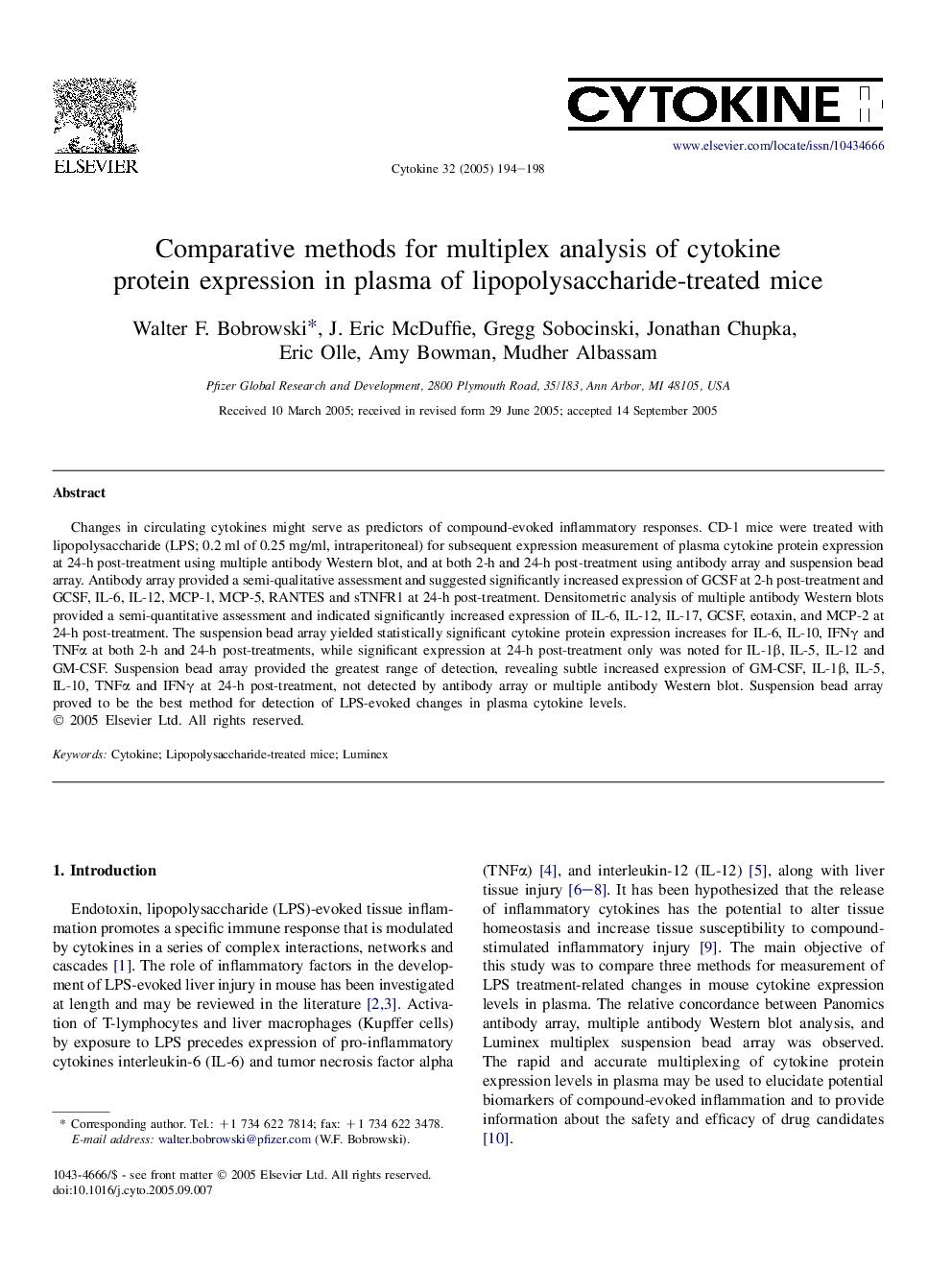| Article ID | Journal | Published Year | Pages | File Type |
|---|---|---|---|---|
| 9110736 | Cytokine | 2005 | 5 Pages |
Abstract
Changes in circulating cytokines might serve as predictors of compound-evoked inflammatory responses. CD-1 mice were treated with lipopolysaccharide (LPS; 0.2 ml of 0.25 mg/ml, intraperitoneal) for subsequent expression measurement of plasma cytokine protein expression at 24-h post-treatment using multiple antibody Western blot, and at both 2-h and 24-h post-treatment using antibody array and suspension bead array. Antibody array provided a semi-qualitative assessment and suggested significantly increased expression of GCSF at 2-h post-treatment and GCSF, IL-6, IL-12, MCP-1, MCP-5, RANTES and sTNFR1 at 24-h post-treatment. Densitometric analysis of multiple antibody Western blots provided a semi-quantitative assessment and indicated significantly increased expression of IL-6, IL-12, IL-17, GCSF, eotaxin, and MCP-2 at 24-h post-treatment. The suspension bead array yielded statistically significant cytokine protein expression increases for IL-6, IL-10, IFNγ and TNFα at both 2-h and 24-h post-treatments, while significant expression at 24-h post-treatment only was noted for IL-1β, IL-5, IL-12 and GM-CSF. Suspension bead array provided the greatest range of detection, revealing subtle increased expression of GM-CSF, IL-1β, IL-5, IL-10, TNFα and IFNγ at 24-h post-treatment, not detected by antibody array or multiple antibody Western blot. Suspension bead array proved to be the best method for detection of LPS-evoked changes in plasma cytokine levels.
Related Topics
Life Sciences
Biochemistry, Genetics and Molecular Biology
Endocrinology
Authors
Walter F. Bobrowski, J. Eric McDuffie, Gregg Sobocinski, Jonathan Chupka, Eric Olle, Amy Bowman, Mudher Albassam,
